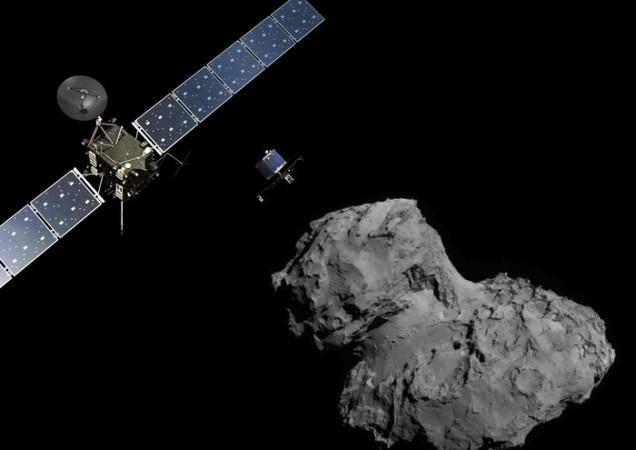
21.55 pm (IST): In a historic achievement, the Philae Lander of the Rosetta Mission has landed on Comet 67P Churyumov-Gerasimenko, the first man-made mission ever to have touched down on a comet.
The European Space Agency confirmed the achievement in a tweet -
Touchdown! My new address: 67P! #CometLanding
European Space Agency receiving signals from @Philae2014 on surface of comet #67P/CG #cometlanding
"We are the first to do this - and that [achievement] will stay forever." Jean Jacques Dordain, Director General of ESA told The Guardian.
The mission is expected to explore the beginnings of the solar system and could lead to clues about the origin of life.
16.44 pm: Contact has been re-established between Rosetta and the Philae lander two hours after the latter separated from the mothership.
ACQUISITION OF SIGNAL #AOS ESA has established contact w/ @Philae2014 now descending to the surface of #67P #CometLanding
16.37 pm (IST): The Comet 67P Churyumov-Gerasimenko is said to be 'singing'.
As lander Philae approaches Comet 67P Churyumov-Gerasimenko, it has picked up on some bubbling sounds through its instruments, which scientisis at the European Space Agency have converted into a 'song'. Listen to the Comet Song here.
The sound is said to be coming from a stream of electrically charged particles that are being released as the comet hurtles through space at 34,175mph, The Independent reported.
14:35pm (IST): The Philae lander has separated from the Rosetta Mission to begin its seven-hour journey towards Comet 67P Churyumov-Gerasimenko. The separation occured at 9:03am (GMT).
"Philae is gone. It is on its path down to the comet," Andrea Accomazzo, Rosetta Flight Operations Director at the European Space Agency, told The Guardian.
Contact with the lander has been lost and will be restored only after two hours. That is when it is expected to send its first data to Earth after separation.
This could be the most extraordinary mission in the outer space, as the European Space Agency's Rosetta spacecraft has begun it process to land on Comet 67P/Churyumov-Gerasimenko, which is said to be a part of the birth of solar system.
If the mission is successful, it would be a culmination of the spaceship's 10-year-long journey in space, in which it has covered four billion miles, having finally arrived near the comet on 6 August this year. It is the first man-made object to circle a comet.
On Wednesday, the spacecraft will deploy its lander, Philae, to the surface of the comet, and could open up the historic opportunity for man to understand the formation of solar system and the origin of life.
"Why comets are so interesting is because they've been in deep freeze since the birth of the solar system," Dr Lewis Dartnell, an astro-biologist at the University of Leicester told The Telegraph. "By digging into it, Philae will be able to tell what temperature the comet was when it formed – which sounds boring, but immediately begins to tell us what the solar system was like in its very early years."
The lander is equipped with several instruments such as a camera, a drill, a magnetic-field detector, a ground-penetrating radar to see into the comet's interior.

















